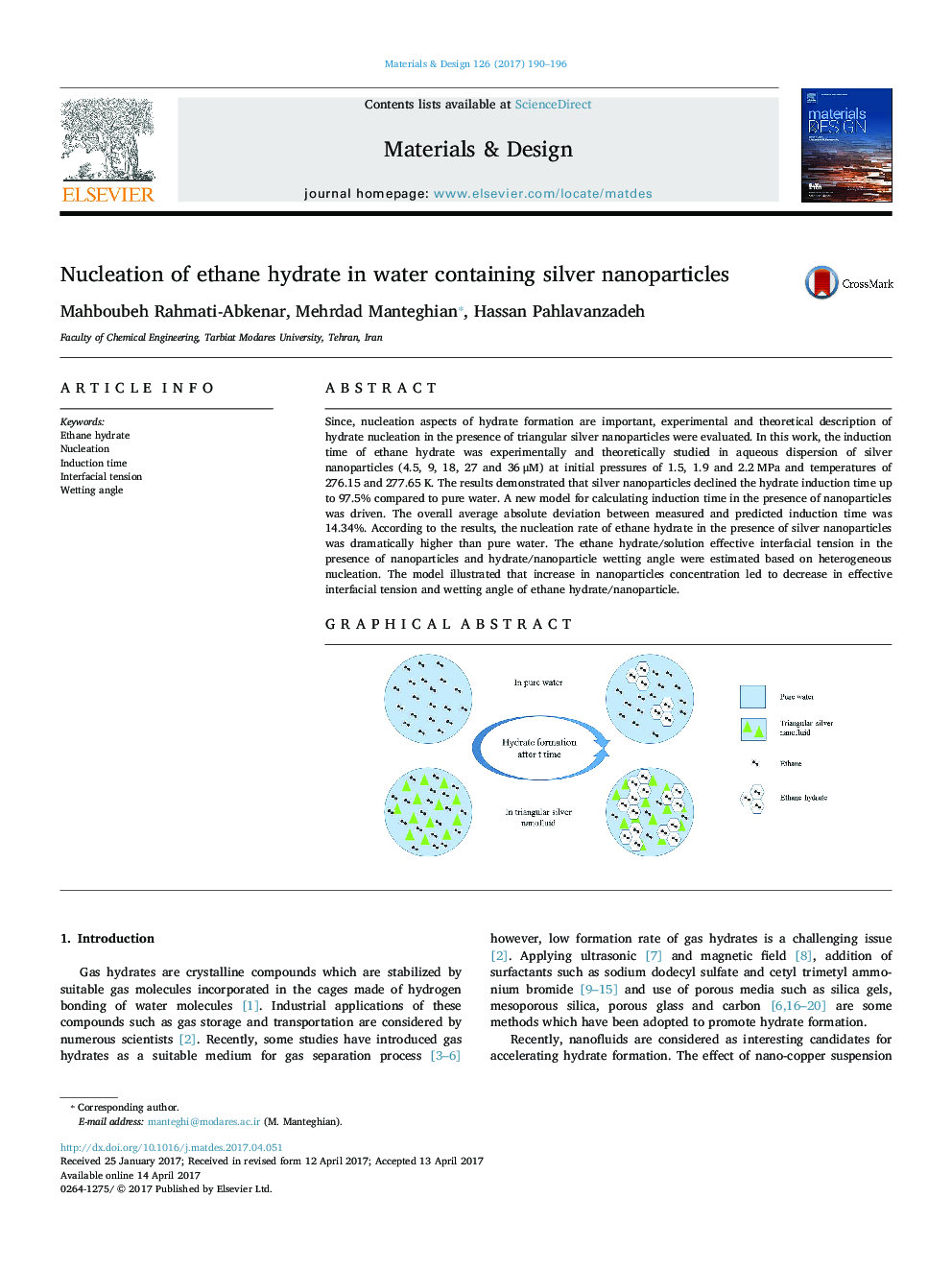| Article ID | Journal | Published Year | Pages | File Type |
|---|---|---|---|---|
| 5023538 | Materials & Design | 2017 | 7 Pages |
â¢Triangular silver nanoparticles reduced the induction time of ethane hydrate remarkably.â¢Higher nucleation rate of ethane hydrate was obtained by using silver nanoparticles.â¢A new model for calculation of the induction time in the presence of nanoparticles was presented.â¢The effective interfacial tension and the hydrate/nanoparticle wetting angle were estimated.
Since, nucleation aspects of hydrate formation are important, experimental and theoretical description of hydrate nucleation in the presence of triangular silver nanoparticles were evaluated. In this work, the induction time of ethane hydrate was experimentally and theoretically studied in aqueous dispersion of silver nanoparticles (4.5, 9, 18, 27 and 36 μM) at initial pressures of 1.5, 1.9 and 2.2 MPa and temperatures of 276.15 and 277.65 K. The results demonstrated that silver nanoparticles declined the hydrate induction time up to 97.5% compared to pure water. A new model for calculating induction time in the presence of nanoparticles was driven. The overall average absolute deviation between measured and predicted induction time was 14.34%. According to the results, the nucleation rate of ethane hydrate in the presence of silver nanoparticles was dramatically higher than pure water. The ethane hydrate/solution effective interfacial tension in the presence of nanoparticles and hydrate/nanoparticle wetting angle were estimated based on heterogeneous nucleation. The model illustrated that increase in nanoparticles concentration led to decrease in effective interfacial tension and wetting angle of ethane hydrate/nanoparticle.
Graphical abstractDownload high-res image (262KB)Download full-size image
